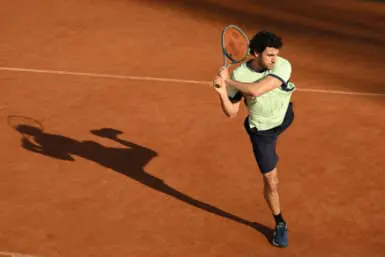American photographer Ansel Adam is often attributed the following quote: “Photography is an austere and blazing poetry of the real.” For a landscape photographer, this certainly rings true, but it could be harder to see just how this philosophy applies to Cambodian photographer Kim Hak.
Hak has put together his own and participated in several exhibitions around the world, from South East Asia to Europe, but “Alive IV” is his first solo exhibition in Tokyo. Hosted at Omotesando’s Spiral Garden, “Alive IV” is a continuation of Hak’s career-long “Alive” series, which features objects that carry the stories of Cambodian refugees — objects that, in themselves, tell the stories words cannot do justice to.
In “Alive IV” Hak shares the stories of some of the members of the Cambodian community in Japan, which include both former international students unable to return due to the turmoil in the 1970s and those who came to Japan as refugees in the 1980s.

Kim Hak, “SOUVENIR BOOK (MR. KUSUNOKI RISSEI, BORN IN 1960 IN PHNOM PENH, LIVES IN KANAGAWA” from Alive Project
Photography To Honor Memory
What sparked Hak’s interest in photography, unsurprisingly, is the history of his own family: among the few possessions his mother kept, fleeing from the war. He pinpoints this definitive moment to the year 1990. “I started to look at my own family photographs, most of them black and white. Some were saved by my mother during the Khmer Rouge regime (1975-1979). She took a big risk to save some family photos by burying them under the ground for almost four years.”
“After the Khmer Rouge regime,” Hak continues, “I remembered that my father had an analog camera at home and we (my father, brother, sisters, uncle, etc.) liked taking photos of our own family members and printing them. Those photographs created a fascination in me about photography and I wanted to learn how to take photos as well.”
Hak then went on to study and work in the tourism industry, though he held his passion for photography close to his heart. Slowly, as he encountered numerous people of various backgrounds during his travels around South-East Asia, a strong interest in documentary photography grew.
“In 2008, I started to attend photography exhibitions and as well as photography projects. It opened my eyes, and I really wanted to learn more about photography. I got the idea of quitting my office work. I started to plan by saving money for one year in order to not have to work the next year.”

Kim Hak “300 OLD MUSIC CASSETTE TAPES(MRS. SOK PHORN, BORN IN 1966 IN TAKEO, LIVES IN KANAGAWA)” from Alive Project
“Alive” – Nearly A Decade In
One of the particularities of Hak’s “Alive” project is its focus on objects, specifically everyday objects that families had saved preciously. “In the 1970s, many Cambodian families were forced to flee the country to escape war, oppression and massacre,” explains Hak. “They left their homes with few possessions: Only the most valuable or practical items were brought along.”
“Above all, I was inspired by my own family’s objects, the kettle and buried family photos which my mother had tried to save during the regime,” said Hak.
What can at first look like relics picked out of an abandoned home are, in fact, full of meaning: memories from a country that has drastically changed. In every photograph showcased in the “Alive” exhibitions, Hak directs the spotlight onto one or two objects which document this time period of his home country. “Each photograph has a clue that leads to the true story.”
Hak has produced three “Alive” exhibitions. The first chapter, which Hak started in 2014, mainly focused on objects of his own family. The second and third chapters focused more on former refugees, with a valiant effort to study and exhibition a variety of perspectives. “I started thinking about former scholarship students,” Hak says. “I had an aunt who was a former scholarship student who received a scholarship to study in Australia in 1972. Because of the Khmer Rouge regime, she couldn’t return home.”

Kim Hak “THE SCARE FROM HOT WATER BURN AND CHILLI (MRS. HAGIWARA KANNA, BORN IN 1970 IN PHNOM PENH, LIVES IN KANAGAWA” from Alive Project
Preparing for “Alive IV”
Rei Foundation Limited (RFL) is a New Zeland-based non-profit organization that focuses on building a society that builds confidence in individuals and communities. A society that respects diversity and recognizes that diversity of individuals and communities is a strength.
“Alive IV” is the fruit of Hak’s second collaboration with RFL. On their work together he says, “In collaboration with Rei Foundation Limited, I have learned so much about refugees, the international responses, and the host countries who offered resettlement of refugees in their lands. And I am learning more and more how to accept the diversity of humanity within societies.”
In 2020 Hak traveled to Japan on a fellowship from the Japan Foundation Asia Centre. His goal was to meet and create pieces of work with members of the Cambodian community in Japan, mainly in Kanagawa, visiting each family and taking the time to listen to their unique stories. “Alive IV” is where Hak presents the history and treasured objects of 13 Cambodian families.
When asked what he would like visitors to experience at this exhibition, Hak says, “I don’t think that most Japanese people know that there is even a Cambodian community in Japan. I do hope that visitors will learn the reason why people became displaced 40 years ago. And relate that to the fact that in these present days, there are conflicts still happening around the world resulting in people being displaced.”
For more details on “Alive IV” see our event listing.
Feature image credit: TWO DAUGHTERS (MR. KUSUNOKI RISSEI, BORN IN 1960 IN PHNOM PENH, LIVES IN KANAGAWA)
Sponsored Post









